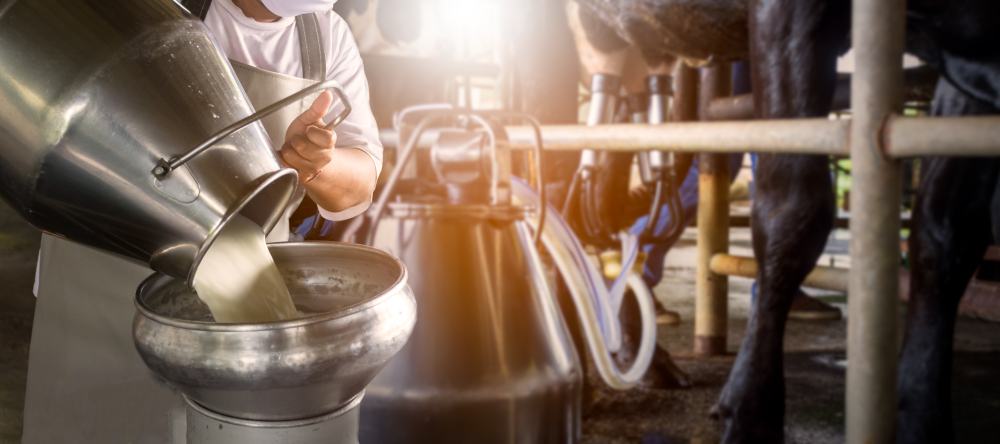
Milk
Milk is an essential food for the human, both for its nutritional capacities and for its beneficial effects. A litre of raw full-cream milk contains about 35 gr. of proteins, 37 gr. of fats, 45 gr. of sugars, and 10 gr. of mineral salts. It helps to regulate healthy muscle development, promotes the process for blood clotting, contributes to the development of bones and teeth and provides the energy needed for physical activities. It is characterized by the contributions in proteins of high biological quality, that is of lactalbumin and casein, and in calcium.
In 2020 in Italy the milk’s production passed 12,65 million of tonnes, with an acceleration of the 4,4% compared to 2019.
The phases by which the milk’s productive processes is subdivided are:
- Farming: dairy animals (cattle, sheep, goats and buffalos) are selected, feed and controlled by the milk’s producer;
- Milking: milk’s assembly operations are usually carried out into a destinated milking room, which is situated in a different building from the farm, with the purpose of guaranteeing the major hygiene. This process takes place mechanically, with the use of machines, or manually, which is a practice that is becoming always rarer;
- Transport of goods and delivery: this is a fundamental phase for the traceability of the final product, the transport generally takes place through equipped cisterns to maintain the milk at a refrigeration temperature to avoid contaminations;
- Treatments, including:
- Pasteurization, for pasteurized milk, fresh pasteurized milk, high quality fresh pasteurized milk;
- Sterilization, for long-life milk;
- Homogenization, for more digestible milk;
- Ultra-High Temperature (U.H.T.), ultraquick treatment at elevated temperature, for long-life milk;
- Skimming, for full-cream milk, partially skimmed, skimmed, lactose-free, sodium-free, vitaminized;
- Transformation: the milk is processed to obtain dairy products and cheeses.
Milk can be commercialized in two ways:
- Raw: when it is not placed at a temperature higher than 40 degrees, and generally it is possible to buy it directly from the farmer;
- Fresh: when it comes raw, to being afterwards processed to a thermic treatment within and not more 48 hours from the milking process.
The principal challenges and problematics of the milk’s supply chain are represented by the needs to avoid any kind of contamination during the milking and transport processes. Moreover, by the need to a total transparency in line with labelling norms, to guarantee to the consumer-citizen a high quality and safe product.
Process and Product Innovation
The shift to the Industry 4.0 is a moment of deep change and innovation capable to disrupt all the sectors.
The industry 4.0 is considered as a new Industrial Revolution that appears to be even more disruptive of the previous ones. It is seen as such because it is born from the convergence of the IT and OT technologies to create a digit...
Supply chains involved:
Dairy Products Milk Plant oilsSupply chains involved:
Plant-based Beverages Coffee Cereals Chocolate Canned Foods Beer Dairy Products Nuts Food Supplements and Nutraceuticals Milk Plant oils Fruit and Vegetables Pasta Meat Baking products Sweet products Rice Cold Cuts and Cured Meats WinerySupply chains involved:
Dairy Products MilkSupply chains involved:
Milk Plant oilsSupply chains involved:
Milk